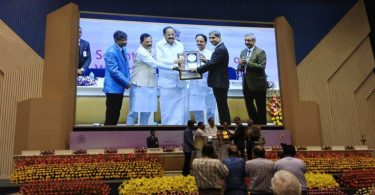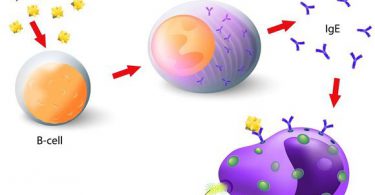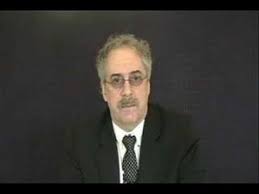This is a shortened account of four proving trials of homeopathic remedies, done by medical students at Cambridge University in 1958, 1959, 1963 and 1964. You will wonder why there has been such a long delay in reporting them; there are several reasons. It was intended to ask the Editor of the B.M.J. to publish the findings in the form of a preliminary communication, but the draft report was too long and I did not see how to condense it. The statistical assessment did not reach the desired significance because of the small number of positive reports. On the advice of the late Dr. Douglas Ross publication was postponed in the hope of arranging further trials on the same model. But two attempts at further trials were unsuccessful, and there have been no more opportunities since. The years have slipped by, and the matter has been on my conscience, and now I hope with your help to add further evidence until the figures achieve statistical significance.
The story began with a letter from the late Dr. Douglas Ross to the B.M.J., published on 28 September 1957, concerning the general misunderstanding of Homoeopathy. This letter was answered by Dr. Fergus Campbell, University Lecturer in Physiology, and Fellow of St. John’s College, Cambridge, who offered to arrange simple controlled experiments with the help of his medical students. After much correspondence and planning, a meeting was arranged with the students of St. John’s, and I explained the plan of the trial devised by Dr. Campbell, as well as telling them about Homoeopathy and answering their questions. In due course another trial was arranged the next year, and a third in 1963 with the help of members of the University Medical Society, and a fourth trial in 1964 at Emmanuel College. I take this opportunity of thanking the students for their reports, and Dr. Campbell for planning the trials, and wish to pay tribute to the late Dr. Douglas Ross for his encouragement. I am grateful to Mr. Dudley Everitt of A. Nelson and Co. for providing the sets of doses, and to the Homoeopathic Research and Educational Trust for their generous financial help.
The sets of doses of granules were issued in numbered boxes; 50 per cent. being medicated with the potency of the selected remedy, and the rest having a flavouring of S.V.R. to prevent anyone distinguishing the active sets from the placebos. The sets were distributed by double-blind random selection, with small notebooks in which the students were asked to record day by day any variations in health, however transient or trivial they might appear at the time. Anyone who notices no variations in health in a period of six weeks is either in astonishingly good health or is, perhaps, just unobservant.
During the introductory lectures the students were told that any of them under treatment for any illness should not take part in the trial; only one was so excluded, because he had diabetes. One other mentioned that he regularly got hay fever every May, but as this trial took place in February, he was not excluded.
The students were told that they could withdraw from the trial at any time if they wished, giving the reason; none withdrew, though naturally many failed to complete the course. I assured them that in the unlikely event of unpleasant or incapacitating symptoms developing, an antidote was available; I had Camphor in reserve, but no-one asked for it.
A total of 230 sets of doses with notebooks were issued, and 103 were returned to me; not a bad percentage considering that I was unable by reason of distance to meet the students every week to remind them to continue the weekly dosage. Of these 103 reports, 12 contained symptoms and signs which I considered typical of the remedy. Ten of these students had taken the potency, and two had taken the placebo. So my assessment was correct in 10 out of 12 cases, which I am informed is likely to occur by chance once in seven or eight times.
In the first trial the remedy was Rhus tox., in the second trial Spigelia, in the third, Lycopodium, and in the fourth, Magnesium phosphate. The 200th potency was used in all the trials, because it has the reputation of being the most provocative potency, the most likely to produce aggravations in therapy, and provings in trials. The interval between doses was seven days; I would have preferred ten days as being the time in which sensitivity reactions develop, but as it is so much easier to remember to take a dose on the same day each week, I agreed to that.
The proving symptoms and signs were as follows;
In the Rhus tox. trial:
1 Swelling of both knees after each dose.
2 Persistent muscular stiffness.
3 Persistent itching of the skin of the abdomen.
4 Itchy spots on the chin.
All four of these students had taken the potency.
In the Spigelia trial:
1 Toothache on one day and headache on three other days.
2 Toothache on two days.
3 Headache on the first day and increased pulse rate on the eleventh day.
4 Headache on the eighth day.
The first three students had taken the potency, and the fourth had taken the placebo.
In the Lycopodium trial:
1 Anorexia and slight pains in the abdomen.
2 Flatulence in the bowels.
3 Stomach ache after dinner.
4 Stomach ache at an unspecified time.
The first three students had taken the potency, and the fourth had taken the placebo.
In the Magnesium phosphate trial, the 28 reports contained no proving symptoms or signs at all. This was surprising to me; even in 28 healthy young men I would expect some to have an occasional cramp or colic or transient neuralgia sometime in the period of six weeks. Perhaps Magnesium phosphate is not a suitable remedy for a proving trial because it is a normal constituent of the body, being an essential enzyme co-factor. Perhaps the inorganic chemical remedies are not as a class suitable for proving trials. The alkaloids, or the naturally occurring alkaloid complexes, may be the most provocative of proving as well as amongst the most valuable in therapy.
Two further trials were attempted; one at Homerton Teacher Training College, and the other at the Technical College at Norwich. The first failed because the College Medical Officer said he wanted a letter from me explaining the trial; I wrote to him, but had no reply whatever. The attempt at Norwich was politely rejected on the grounds that it was considered that the students would be at some risk, and were mostly under age. In both cases I decided it was useless to press the matter. I have not attempted to arrange a trial at the University of East Anglia because I might be accused of a breach of medical etiquette, appearing to try to acquire patients.
So I offer these findings in the hope that they will provide a basis for further work on the same model, to add to the figures and achieve statistical significance. I shall be glad to co-operate with anyone who is invited to give a lecture to medical students or others, so that the lecture can be followed by a trial to test the claims made of the reality of the action of potencies.




